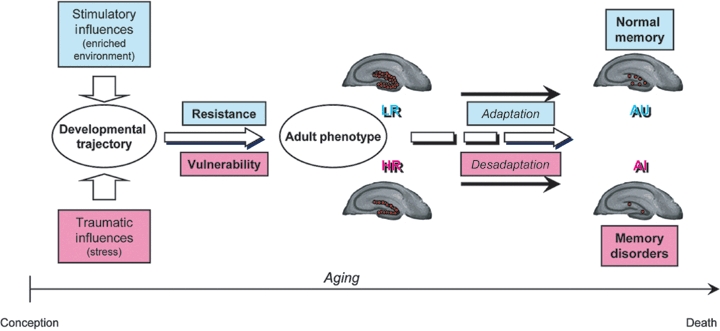Fig. 3.

Conceptual framework highlighting the role played by hippocampal neurogenesis in environmentally induced vulnerability to the development of pathological aging. In aged rats, interindividual differences in the risk of developing age-related memory disorders are associated with individual differences in hippocampal neurogenesis. These interindividual differences can be predicted earlier in life. Animals with a low level of neurogenesis [i.e. high-behavioral responders to stress (HRs)] may not be able to adapt to environmental demands and, thus, may be more vulnerable to aging processes. On the other hand, the low-behavioral responders to novelty (LRs) starting off with a high level of neurogenesis would be resilient to the development of age-related memory disorders. These different phenotypes may result from early environmental experiences. For example, stressful events during the pre- and/or the postnatal period may lead to an HR phenotype and vulnerability to the aging processes. On the contrary, positive life events during development might favor an LR phenotype, resistant to the appearance of memory disorders.
